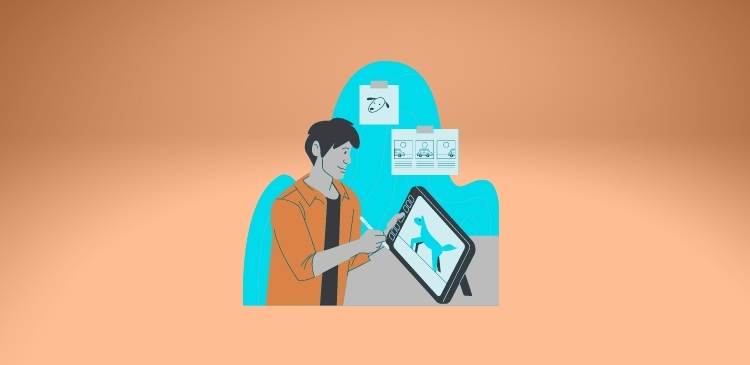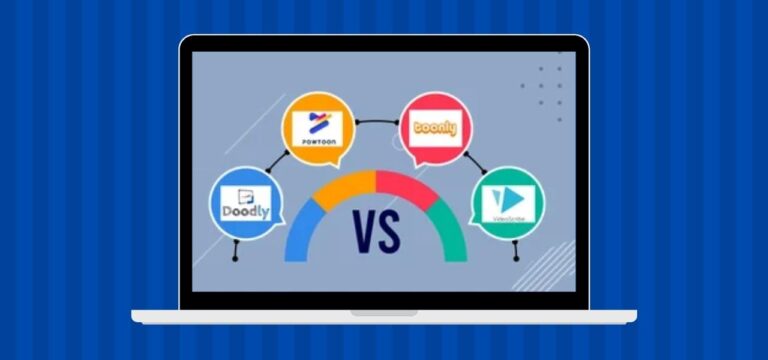It is irrefutable that animation has revolutionized how we tell stories. With its efficiency, it has opened up endless possibilities for storytellers. Through animation, creators can transport their audiences to imaginative universes easily.
If you love telling stories, animation is the top place to start. But what is animation? Animation involves creating moving images through drawings or computer-generated graphics. Cartoonists and artists utilize multiple techniques for animation these days.
Now, Most animated movies utilize computer-generated images, thanks to computer-assisted animation.
Animation techniques have progressed throughout history. Popular animation methods include hand-drawn, stop-motion, and Whiteboard Animation. Animators must possess the skills to execute every technique effortlessly.
What Is Animation?
According to the Definition of Animation, It is an engaging art that has been around for over a century. It was first utilized in films by French pioneer Émile Reynaud in 1887.
What is animation, and how does it play a great role? In today’s world, animation is crucial for modern business promotion. If you want to create explainer videos for your company, animation can help by effectively bringing your ideas. Animation simplifies complex concepts and has become an indispensable tool for all businesses.
There are numerous benefits to using animation in multimedia production. It lets you create storylines that connect with your audience effortlessly. By using the power of visual storytelling, you can grab people’s attention.
Moreover, Motion Animation provides limitless creative options that are attention-grabbing. There are numerous techniques available, from classic hand-drawn animations to advanced computer-generated graphics.
Definition of Animation
Do you know what is animation? Animation is an art form that creates the illusion of movement through a series of images. It involves photographing successive drawings or puppets to create a sequence of movements.
When we rapidly view multiple images, our brain merges them into a single moving image. It occurs because our eyes can simply retain an image for about 1/10th of a second. This is how animation works; it tricks our brains into perceiving motion.
Traditional Animation Software involves drawing or painting on transparent sheets. But now computer-generated imagery (CGI) is the norm. This technology allows for more realistic visuals than traditional methods.
Frame rate is a crucial element of animation. It determines how many frames are required to create one second’s worth of footage. A higher frame rate leads to smoother motion, with the standard for moving characters being 12 frames per second. However, this can sometimes appear choppy. So animators may opt for a higher frame rate to achieve better results.
Types of Animation
There are various kinds of animation, including traditional, 2D vector-based, 3D, motion graphics, and stop motion.
1. Traditional
Traditional animation is also called cell animation. It is one of the oldest film animation forms. It involves drawing objects on transparent celluloid paper and creating an animated sequence by drawing each frame. This process resembles a flipbook but on a larger scale.
Most of the time, 2D Animation is traditional animation. Aladdin and The Lion King are classic films that use this technique. Not all 2D animations are traditional. In the past, animators drew on a light table to reference their previous work while creating new frames. Nowadays, drawings are typically done digitally using tablets instead of pen and paper.
Despite its age-old techniques, traditional animation remains an essential part of the industry’s history. Animators create each frame manually with tremendous patience and skill. This art form continues to inspire modern-day animators worldwide.
2. 2D animation
Now, 2D computer animation is gaining popularity due to technology accessibility. 2D animation is traditional, like early Disney movies such as Pinocchio and Beauty and the Beast. Vector-based animation can be 2D but not traditional. Motion is controlled by vectors instead of pixels in Vector-based. JPG, GIF, and BMP images are pixel images that lose quality when resized.
Vector graphics use lines to create images, allowing for flexibility in size without affecting quality. Vector-based animation uses math to resize images and create reusable characters. Animators manipulate vectors for motion in their animations.
3. 3D animation
3D animation, also called computer animation, is now the most popular type of animation. Although it differs greatly from traditional styles, artists still apply the same principles of composition in their work.
Although computers have replaced hand-drawn animation, creating 3D animation is not necessarily easy. The computer is merely another tool for animators to utilize in their extensive process.
In reality, producing a 3D animated film involves utilizing software to manipulate the character’s body parts. Animators then establish digital frames for each action before allowing the computer to compute motion based on these frames.
Throughout the process, animators adjust character movements in their scenes. 3D animation has become the prevalent style in animated movies, from Toy Story (1995) to recent films like Coco.
4. Motion Graphics
Motion Graphics is a powerful tool in digital media and design. They use animation to create the illusion of motion, often in ads or film title sequences. But their purpose is always to communicate something specific to the viewer. Motion Graphics are used in multimedia projects where text is important.
In fact, text often takes center stage in these animations. Many examples of Motion Graphic animations incorporate some of today’s top trends. One notable difference between Motion Graphics and other animation techniques is that characters or storylines do not drive them. Instead, artists focus on moving graphic elements such as shapes and text using this technique.
Motion Graphics are commonly used in TV promos, explainer videos, and logos. Because they don’t require mimicking body movements or facial expressions like traditional animation. Hence, Artists don’t need all the skills required for other animation techniques. Motion Graphics engage audiences through dynamic visuals without relying on complex storytelling techniques.
5. Stop Motion
Stop motion involves adjusting physical objects in each frame to create the illusion of movement. This type of animation includes various forms, such as pixelation and cutout animation. This style has been used to produce popular films and shows throughout history.
Stop motion is animation using photos of real objects to create movement. Stop-motion artists use photography instead of hand-drawing each frame. It involves taking photos of an object or scene and moving them slightly before taking another photo. Then repeat the process until a full scene has been captured. The technique can produce a realistic illusion of motion when done with patience.
Why is Animation Significant in Multimedia?
Multimedia technologies use various forms of media to present information interactively. Animation design is a great way to achieve this. Multimedia technology includes hardware and software.
It is used to create various types of products aimed at different consumer groups. One such product is animated design. This design utilizes multimedia technology to achieve perfection and cater to the audience in a variety of ways.
Multimedia encompasses various forms of interactive data, including text, images, and video. Animation is a type of multimedia that can improve audience perception. Integrating different media types like animation and video samples can have a positive impact on the audience’s perception of the business. Choosing animation elements in different colors and styles can be particularly effective.
Benefits of Animation
Using animated objects has several benefits.
- Animation is more effective than traditional diagrams in enhancing visual comprehension.
- Animation also eliminates unnecessary words and visuals.
- Animation is an effective method to convey ideas with speed and precision.
- Animation can be an economical technique to communicate information.
- It entertains and educates the audience.
- It provides realistic scenarios faced in daily life while learning and participating in various activities.
Conclusion
Animation is a process where a series of images duplicate movements. However, the process is more complicated than that. Animated videos are efficient in connecting with viewers and demonstrating products or services. They make a lasting impression and are impactful tools for explanation.
So above mentioned information provides a brief overview of animation and its different types. It helps you to get more information about what is animation. With progress in technology, animation has become a popular medium for artists. It allows people to tell stories and show what can not be seen in real life.





![Top: 10 Best Free Video Animation Software for Kids 2024 [2D & 3D] 5 Animation Software for Kids](https://ranjeetdigital.com/wp-content/uploads/2023/05/Animation-Software-for-Kids-768x415.jpg)

